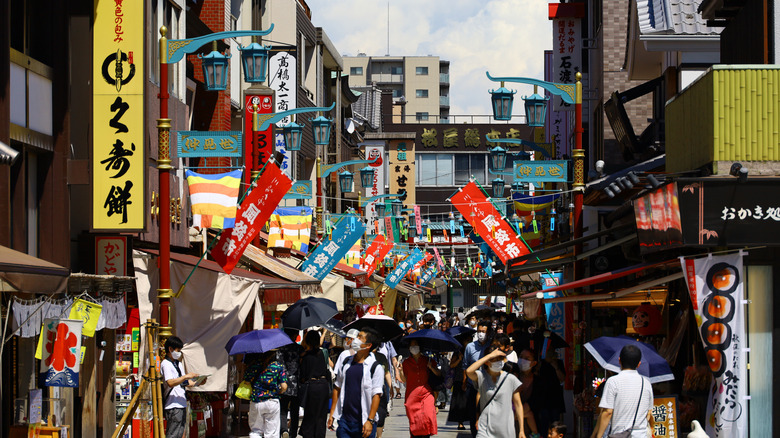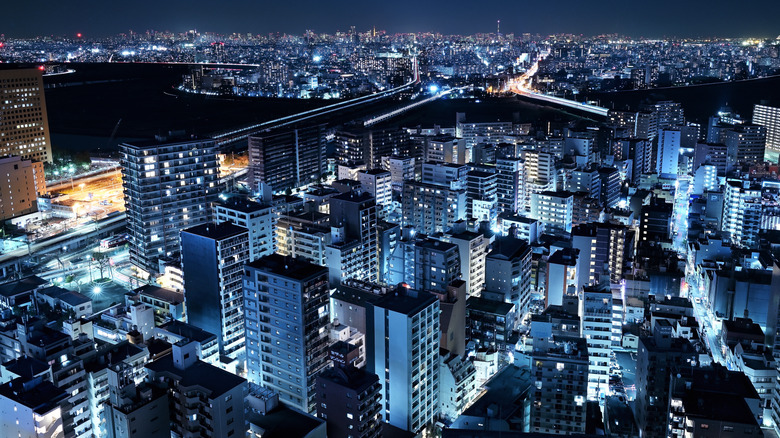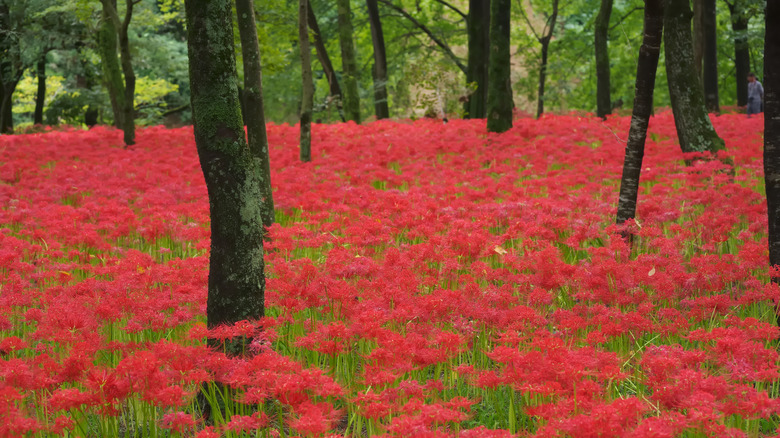Situated Between Tokyo And Yokohama Lies A Vibrant City Where Industry Meets Lush Scenery
Japan is a red-hot travel destination these days, so much so that it has become a victim of its success. Destinations such as Tokyo and Osaka are now often mobbed with visitors, and overtourism has become a legitimate concern, so much so that Kyoto is banning tourists from certain parts of the city. That said, the country is full of spots where you'll encounter little to no crowds — such as this underrated city full of history and sweets. Getting off of the beaten path isn't so hard to do in Japan, where you'll discover places like the city of Kawasaki, which not only features beautiful nature but also an industrial heritage that helped put modern Japan firmly on the map.
Situated smack-dab between Tokyo and the unique, walkable paradise of Yokohama, Kawasaki is home to 1.5 million people and is arguably Japan at its most honest. This very modern city happily celebrates its roots as a business powerhouse, home to companies such as Fujitsu, Toshiba, and Nippon Steel. Kawasaki occupies a place that was right at the heart of Japan's industrial revolution and represents the country's spectacular commercial history, but is also an alluring destination in its own right.
Kawasaki hosts top-notch museums, a cutting-edge art scene, as well as a bopping shopping, food, and nightlife district near Kawasaki Station. The town also really knows how to let its hair down through several of Japan's most intriguing festivals — including one of the country's biggest Halloween celebrations — along with the somewhat bizarre "Festival of the Steel Phallus" which takes place each April at the Kanayama Shrine.
Escape the crowds in Kawasaki
Kawasaki sits on the Tama River and originated as a postal stop on the Tokaido linking Tokyo (then Edo) with Kyoto. Its location along one of the country's main waterways as well as its proximity to Tokyo Bay helped guarantee its role as one of Japan's industrial powerhouses, and that legacy can still be seen today.
The city maintains its links with the past in the form of the Kawasaki Daishi Heikenji Temple. Founded in 1128, this colorful Buddhist pagoda is considered a power source of Yakuyoke, which is said to ward off evil. Most uniquely, the temple features a room where people come to pray for safe driving that's especially popular with taxi drivers.
Kawasaki houses some quality museums celebrating its commercial prowess and more, including the Toshiba Science Museum, the Kawasaki Civic Museum, and the Taro Okamoto Museum of Art which celebrates one of the city's native sons, acclaimed avant-garde artist Taro Okamoto. There is also the fun and funky (not to mention family-friendly) Fujiko F. Fujio Museum which is dedicated to all things "Doraemun," a manga and anime character that's a central part of Japanese pop culture.
See flowers and greenery in Kawasaki's buzzing urban center
Despite its industrial bonafides, Kawasaki is also a remarkably scenic place. Lit up at night, the city's steelworks, refineries, and factories are chic in their own way, while the Japan Open-Air Folk House Museum is a place where you can experience traditional Japanese architecture (25 traditionally thatched-roof houses ) in an idyllic country setting. In addition, the hills and mountains surrounding Kawasaki are home to picturesque rice terraces that deliver a sense of serenity to their verdant surroundings.
Lovers of blossoms and blooms will get their fix at Nahiko Field — which features hundreds of sunflowers during certain times of the year — while the Ataka area is known for its beautiful red higan-bana flowers (cluster amalillys). While you're in the area, be sure to stop off at the Gyroaku-en Japanese Garden. Designed by a Buddhist monk in the 15th century, this peaceful and harmonious garden has been designated as a National Site of Scenic Beauty.
Kawasaki is very conveniently located, just a 15-minute straight shot on the train from Tokyo Station. While it's good to visit any time of the year, spring and fall offer the most mild temperatures, as winter can be cold and summer is usually hot, humid, and wet. For more explorations in the area of the capital, check out these best places for a day trip if you're staying in Tokyo.


